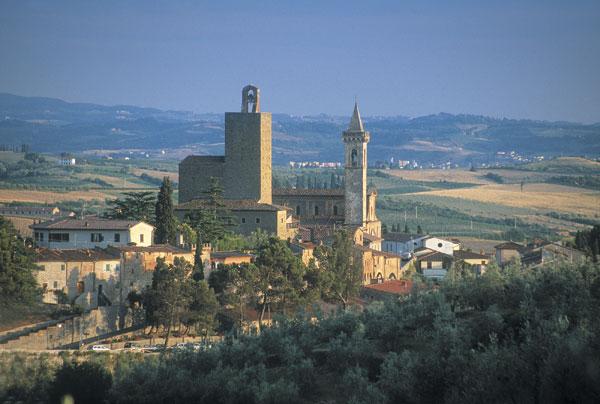Every day, especially holy days and feast days, the inviting but relentless peal of church bells rings out across Italy calling all good Catholics to prayer. Whether it’s Epiphany, the Feast of St. Michael or St. Mark, the Procession of the Grieving Madonna, the Day of the Dead, or just plain Sunday, there is always a reason to heed the insistent knell.
Easter is a particularly sonorous time for these bronze authorities as flagellants and behooded penitents line the streets to carry out time-honoured religious rituals in many parts of Italy, especially in the south.
In the Middle Ages, wealthy towns vied with one another to provide the finest bell tower, or campanile, to house those all-important bells, and to make sure everyone got the urgent message. This was, in part, a concern for heavenly matters but also to compete with rival towns in their expressions of wealth and power. These buildings were often built separate from the cathedral (duomo) or church, but bells were also housed in spires, domes, or sometimes fitted into the façade, as in St. Peter’s in Rome. There is a disputed story that the first bell tower was erected by the bishop of Nola in Campania in the fourth century to summon his flock to prayer. It is more likely that the first one built in Italy was the circular leaning campanile at Ravenna which dates back to the fifth century, even though the original was flattened by an earthquake in 1733.

The Great Capomaestri
Reaching skywards was something of a preoccupation in medieval architecture, as seen in the fortified towers of San Gimignano and Bologna, and the impressive bell towers in town squares all over Italy used to summon citizens to town meetings. In the building of cathedrals and important churches, the campanile was often given particular emphasis. When Florence decided to build a cathedral to rival any in Christendom, the campanile was a vital part of the scheme, and the great capomaestri, Giotto and Pisano, were employed to ensure that the ambition was realised. ‘The Florentine Republic... desires that an edifice shall be constructed so magnificent in its height and beauty that it shall surpass anything of its kind produced in the times of their greatest power by the Greeks and the Romans’. Completed in 1359, long after Giotto’s death, the campanile of Santa Maria del Fiore stands a full 85 metres, resplendent in pink, white and green Tuscan marble, and richly adorned with intricate carving.
Nowhere does the sound of church bells contribute more to the overall atmosphere of the place than in Venice, when a visitor can be transported into another century by a solitary knell, muted by a winter lagoon mist. Sometimes the sound is more forceful, and the combination of several of the city’s many church towers and steeples making their campanological appeal is a constant reminder that this is a deeply religious place.
Imagine the deep-rooted shock felt by proud Venetians when their 98-metre campanile fell to the ground with hardly any warning in 1902. For over 700 years, this venerable tower had served to ring out bells, act as lighthouse or even to suspend miserable prisoners in cages from its lofty heights. Needless to say, rebuilding it was a priority which was accomplished within 10 years.

Most Famous
Without doubt, the 12th-century Leaning Tower of Pisa is the best known bell tower in Italy. It developed a lean before it was even completed, and has recently reopened to the public after the completion of engineering works to stop its 55-metre column tilting any further.
Most bell towers don’t achieve such fame, but they are a defining characteristic of Italy’s many hill towns and villages, as well as some of its finest cities. Traditionalists may rejoice to learn that last year the Italian Bishops’ Conference banned the use of church towers for the installation of mobile phone masts and stated, as the Guardian put it: ‘Church towers should be reserved for communications between God and the faithful.’
These days, far fewer people heed the regular call to prayer, but the bells still ring out, sometimes joyful, sometimes sad and wistful. Their sound is an integral part of experiencing an Italian town or city, and the sight of the buildings that house them will forever enrich the landscape.








